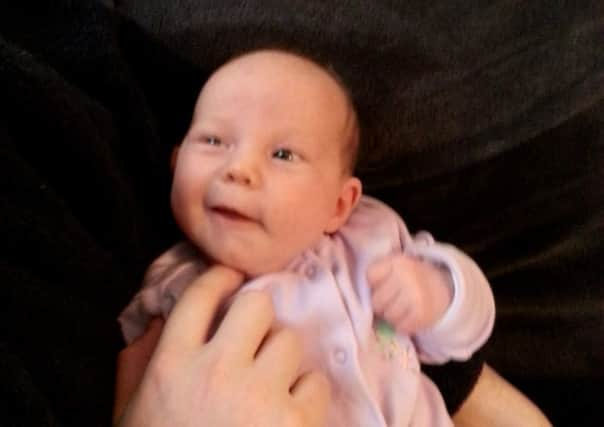Cot posed '˜signicant hazard' experts tell inquest into death of seven-week-old baby


Grace Roseman tragically died in a £199 Bednest cot in April, 2015, after lifting her head over one of the fold-down sides of the “dangerous” crib.
She was unable to free herself from the edge of the cot and died as a result of asphyxia.
Advertisement
Hide AdAdvertisement
Hide AdYesterday (Weds), her mother, Esther Roseman, 39, described the harrowing moment she discovered her daughter’s lifeless and purple body and screamed, ‘Grace is dead’.
Today (Thurs), on the second day of the inquest into Grace’s death at County Hall in Horsham, West Sussex, four expert paediatricians discussed the safety of the Bednest cost, and the likelihood of Grace being able to lift her head over the 7cm lip on side.
Dr Betty Hutchon, a paediatric occupational therapist, said: “I was horrified when I saw the crib because of the bar going across.
“Seeing the height of the bar, and knowing what babies can do, I could see that the bar holding the side in that position would be a very big hazard if they baby fell on it.”
Advertisement
Hide AdAdvertisement
Hide AdShe added: “For me, it seems very dangerous for a baby and the design is flawed and needs to be changed.”
The cot, which had been given to Esther by a family friend, is able to be folded at the side, allowing mothers easier access to their children.
Marketing material from Bednest at the time of Grace’s death suggested that mothers were able to leave their children unattended while the side was folded down - despite issuing a warning against the practice in their instructions, something Esther did not have.
The hearing was show videos of babies of various ages during ‘tummy time’, where babies are encouraged to move on the fronts.
Advertisement
Hide AdAdvertisement
Hide AdFootage revealed a range of ability in the ages of different children, with some as young as six weeks being able to use their arms to raise their heads.
Peter Fleming, a professor of infant health and developmental physiology at Bristol University, told the hearing he thought the cot posed a risk to babies.
He said: “I felt that using the Bednest cot with the side half-down potentially exposed babies to a significant hazard.
“The fact was that Grace died. The mechanism in her death is not clear, but it’s not the first time I have come across a baby dying in similar circumstances.”
Advertisement
Hide AdAdvertisement
Hide AdReferring to research he carried out into the Bednest cot, he added: “We felt that by seven or eight weeks, it was an unusual event for a baby to lift their head over the side, but it was certainly not inconceivable - unlikely, but not impossible.”
Dr Michael Coren, a consultant paediatrician giving his expert evidence on behalf of the family, said: “I think it’s highly likely that it is possible, and it’s reasonable to say, that a child of that age could have made the movements necessary to have become stuck in that way.
“I do not think one has to invoke any other agency to place Grace in the position she was found.
“I accept that Grace could have got into that position on her own.”
Advertisement
Hide AdAdvertisement
Hide AdWest Sussex senior coroner Penelope Schofield asked Dr Cohen whether the fact that Grace was born at 42 weeks would have had an impact on her development and ability to lift her head over the edge of the cot.
Dr Cohen said: “A term birth is anywhere between 37 and 42 weeks, and Grace was at the very top end of that.
“So at only seven weeks old, that matters.”
The court also heard from Sir Alan Craft, an emeritus professor at Newcastle University and a consultant paediatrician, who was giving evidence on behalf of Bednest.
He said: “As we have seen in the videos, children can raise their heads.
Advertisement
Hide AdAdvertisement
Hide Ad“But the question is: could you get a series of movements which would let a child end up in the position in which Grace was found.
“The fact that they would lift their heads doesn’t mean they could lift it over the wall of the cot.”
He explained “squirming and a bit of gravity” would have allowed Grace to get from the end of the cot at which she was left to the edge where she was found.
Sir Alan said: “I think there is a mechanism I can conceive which would allow a baby to end up where the baby was found.”
Advertisement
Hide AdAdvertisement
Hide AdHe added: “One death is too many, but the fact that there has never been one before suggests to me that they are inherently safe, when the side is raised to 11cm.
“The fact there haven’t been any reported incidents, the manufacturer would be thinking, ‘we’ve probably got this about right’, if the are using it according to the instructions.
“I think if you look at the cot and read the instructions at the same time, it can be used safely - and clearly is used safely, in the vast majority of incidents.”
The hearing continues.